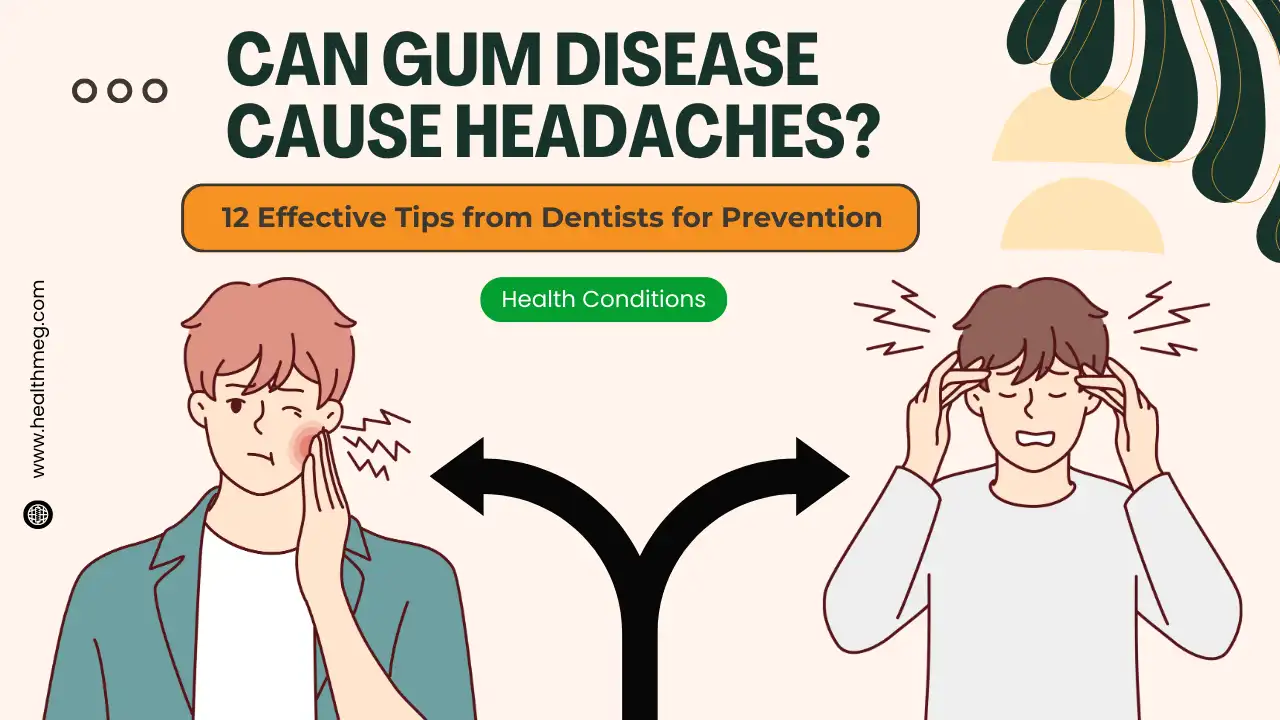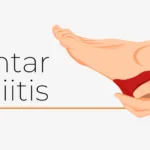If you suffer from thoracic outlet syndrome (TOS), you know how much this condition can impact your ability to get a good night’s sleep. The characteristic numbness, tingling, and pain in the arms, shoulders, and neck caused by TOS often worsen at night, making it difficult to fall asleep and stay asleep. Fortunately, optimizing your sleeping position can significantly reduce TOS symptoms and improve sleep quality.
In this comprehensive guide, we’ll discuss the intricacies of TOS and how sleep position affects symptoms. You’ll learn about the Best Thoracic Outlet Syndrome Sleeping Positions for relief backed by medical research. We’ll also cover complementary lifestyle measures and common misconceptions for managing TOS. Read on to discover new techniques that can help you wake up feeling refreshed and symptom-free.
Do read the People Also Ask (FAQs) about this topic.
TOS Explained: Causes, Symptoms, and Diagnosis
TOS refers to a group of disorders caused by compression of the nerves, arteries, and veins passing through the thoracic outlet – the narrow passage between the base of the neck and upper chest containing neural, vascular, and muscular structures. TOS can be categorized as one of three types depending on which structures are being compressed:
- Neurogenic TOS – compression of the brachial plexus nerves
- Venous TOS – compression of the subclavian vein
- Arterial TOS – compression of the subclavian artery
While the specific symptoms vary, most TOS patients experience chronic pain in the neck, shoulders, arms, and upper back. Other common symptoms include numbness, tingling, coldness, and weakness in the hands and arms. In many cases, symptoms worsen at night and disrupt sleep.
What Causes TOS: Anatomical and Postural Factors
TOS can stem from anatomical defects present at birth or develop later due to injury, poor posture, and overuse:
- Congenital defects – Being born with an extra cervical rib, distorted first thoracic rib, or tight scalene muscles can cause compression.
- Trauma – Car accidents, sports injuries, and fractures involving the shoulder and neck bones, muscles, or connective tissue can alter thoracic outlet anatomy.
- Poor posture – Frequent slouching and shoulder rounding narrow the thoracic outlet space over time.
- Overuse – Repetitive motions involving overhead reaching can strain the thoracic outlet structures.
- Tight muscles – Chronically tense muscles in the neck, chest, shoulders and back pull bones and nerves out of alignment.
For many patients, TOS results from a combination of these anatomical and postural factors. Anything limiting space in the thoracic outlet can contribute to the compression of vital nerves and blood vessels.
Recognizing TOS: Symptoms and Diagnosis
TOS has a wide range of nonspecific symptoms, so obtaining an accurate diagnosis is important. Let your doctor know if you experience any of the following:
- Neck, shoulder, upper back, or arm pain
- Numbness or tingling in the fingers, hands or arms
- Weakness or coldness in the arms and hands
- Swelling in the arms or hands
- Headaches or migraines
- Discoloration or blueness in the fingers or hands
- Pain or difficulty raising the arms over the head
Diagnostic tests for TOS include:
- Physical exam to assess range of motion and signs of compression
- Nerve conduction study to measure nerve function
- Vascular imaging tests to evaluate blood flow
- X-rays to visualize the thoracic outlet structures
- MRI to pinpoint compressed nerves and vessels
Based on a combination of reported symptoms, physical exam findings, and imaging test results, your doctor can diagnose TOS and determine the specific structures involved.
Sleep Positions and Their Role in TOS
Now that you understand the basics of TOS development and diagnosis, let’s examine how your sleeping position impacts thoracic outlet compression and associated symptoms.
The Effect of Sleep Positions on TOS Symptoms
This case study underscores that a habitual abnormal posture can significantly contribute to neurogenic TOS. The researchers emphasize the importance of recognizing TOS that stems from habitual causes. A simple adjustment in posture could not only stabilize but also potentially reverse the progression of the disease.
- Sleeping slouched over compresses the thoracic outlet.
- Lying on the stomach twists the neck and compresses nerves.
- Side sleeping with arms overhead overstretches the nerves.
- Back sleeping with a cervical pillow maintains an open thoracic outlet.
The nerves and vessels passing through the narrowed thoracic outlet space are extremely sensitive to compression and traction. Minor positional adjustments during sleep can significantly impact symptoms.
Common Sleep Challenges for TOS Patients
Many TOS patients experience the following sleep disruptions that impair restfulness:
- Waking up frequently due to pain and numbness
- Difficulty falling asleep from neck and shoulder discomfort
- Tossing and turning trying to find a tolerable position
- Joint stiffness and muscle spasms at night
- Arms or hands falling asleep due to nerve compression
- Sleeping fewer hours than desired due to symptoms
By optimizing your sleep setup and positions for TOS, you can minimize nighttime symptom flare-ups and improve sleep continuity.
The Role of Sleep Posture in TOS Management
Beyond sleeping position alone, your overall sleep posture plays a vital role in controlling TOS. Maintaining proper alignment of the head, neck, shoulders, and spine allows optimal opening of the thoracic outlet space.
Try these posture tips:
- Use a cervical pillow that supports the natural curve of your neck
- Avoid pillows that force your head forward or backward
- Keep your spine, head, and neck aligned while side sleeping
- Use pillows to prevent shoulder rollover if side sleeping
- Keep shoulders level and avoid rounding them forward
Proper posture alignment minimizes compression throughout the thoracic outlet during sleep.
Best Thoracic Outlet Syndrome Sleeping Position
Now let’s explore the best sleeping positions for TOS.
1. Sleeping Flat on the Back for TOS Patients
Sleeping flat on the back keeps the head, neck, shoulders, and arms in a neutral position that maximizes thoracic outlet space. Studies demonstrate that the supine position results in the least compression.
When back sleeping:
- Use a slim cervical pillow to support the natural neck curve. Overly thick pillows overextend the neck.
- Avoid craning the neck to one side. Keep the head facing straight up.
- Place a pillow under the knees to prevent flattening of the lower back curve.
- Keep arms relaxed at your sides with elbows slightly bent rather than overhead.
- Positioning a small pillow under each arm can also help maintain optimal shoulder alignment.
This supine position with proper neck and shoulder support helps take direct pressure off the thoracic outlet all night long.
2. Side Sleeping: Proper Support for Shoulders and Neck
Some people struggle to back sleep due to conditions like sleep apnea. For those comfortable on their side:
- Place a firm pillow between your knees and elbows to prevent the upper shoulder and arm from rolling inward.
- Use a slender cervical pillow made specifically for side sleepers to keep your neck straight.
- Avoid thick pillows that force the head and neck too far forward or backward.
- Sleep on your less symptomatic side. Switch halfway through the night if both sides are equally affected.
3. Sleeping in a recliner
For those who find it difficult to sleep in the above positions, sleeping in a recliner can take the pressure off the thoracic outlet.
- Choose a recliner with an adjustable backrest, footrest, and excellent neck/lumbar support.
- Use a cervical pillow and wedge pillows to maintain natural spinal curves.
- Prop yourself at a 30-45 degree incline and raise your feet to evenly distribute weight.
- Keep arms relaxed at the sides with pillows supporting elbows. Avoid rounded shoulders.
- Alternate between reclining and side sleeping to vary pressure points.
- Customize recliner positions and supportive pillow placement for optimal thoracic outlet decompression and comfort.
By tailoring incline levels and supportive devices to your needs, you can find an optimal sleep posture.
You can learn more about sleeping positions in this article – Autistic Sleep Positions: More Than Just Comfort?
Enhancing Sleep Quality for TOS Patients
In addition to sleeping positions, certain devices and sleep hygiene practices can also improve restfulness for TOS patients.
The Role of Pillows in TOS Sleep Support
Strategically placed pillows are essential for maintaining proper posture alignment during sleep to avoid thoracic outlet compression.
Pillow recommendations for TOS patients include:
- Cervical pillows with an indent for the head to keep the neck straight
- Body pillows are placed between the knees and arms while side sleeping
- Lumbar pillows or rolls to prevent the lower back from flattening while back sleeping
- Wedge pillows to prop the upper body at an incline
Using multiple pillows to achieve neutral positioning of the spine and limbs reduces postural stresses on the thoracic outlet.
The Impact of Sleep Hygiene on TOS Symptoms
Adhering to healthy sleep hygiene practices can make a big difference in how you feel upon waking up:
- Go to bed and wake up on a consistent schedule to regulate your circadian rhythm.
- Make sure your bedroom is cool, quiet, and dark. Use a white noise machine or earplugs if necessary.
- Give yourself an hour before bedtime to unwind and avoid stimulating activities like electronic use.
- Avoid alcohol for at least 4 hours before bed since it disrupts sleep cycles.
- Rule out underlying sleep disorders like sleep apnea with a professional evaluation.
Following healthy sleep habits allows you to fall asleep more easily and obtain continuous, restorative sleep.
Lifestyle Adjustments for Better Sleep with TOS
Certain daytime lifestyle modifications enable TOS patients to sleep better at night:
- Practice relaxed, diaphragmatic breathing throughout the day to release muscle tension in the neck and thoracic area.
- Correct your posture by standing and sitting tall. Avoid rounding your shoulders which strains the thoracic outlet.
- Stretch and exercise your neck, chest, shoulders, and upper back regularly to maintain flexibility and range of motion.
- Consider occupational or physical therapy to learn safe strengthening and stretching techniques.
- Get fitted for properly supportive bras and backpack straps that don’t compress the thoracic outlet.
- Avoid activities requiring prolonged overhead arm reaching to prevent muscle tightness.
With self-care and professional guidance, you can reduce postural stresses on the thoracic outlet during your waking hours.
Complementary TOS Management Strategies
While optimizing sleep position is key, other therapies also help control TOS symptoms.
The Role of Physical Therapy in TOS Management
Special physical therapy programs focused on TOS can help strengthen and stretch muscles using postures that open the thoracic outlet. Targeted manual therapy also helps mobilize tight joints and soft tissues.
Some PT methods include:
- Postural retraining to prevent rounding shoulders
- Resistance exercises using bent-over rows, shoulder presses and band pull-apart
- Nerve gliding techniques to relieve neural tension
- Joint and soft tissue mobilization of the thoracic spine, ribs, and shoulders
- Neuromuscular therapy to release trigger points in neck and shoulder muscles
When combined with proper sleep positioning, physical therapy gives a cumulative benefit for TOS.
Breathing Techniques and Their Impact on TOS
Trouble taking deep breaths is common in TOS, which reduces oxygenation and increases tension. Specific breathing exercises can help:
- Pursed lip breathing helps fully exhale and control inspirations.
- Diaphragmatic breathing retrains proper abdominal and thoracic movement.
- Yoga breathing exercises like ujjayi, nadi shodhana, and bhastrika clear the mind, reduce stress and improve oxygenation.
Practising controlled breathing throughout the day eases muscle tension and allows better oxygen exchange so you feel calmer.
Postural Adjustments for Sleep Comfort with TOS
Adjusting your sleep setup can take pressure off areas aggravated by TOS:
- Use a mattress topper to soften pressure points on the side or stomach sleepers. Choose conforming memory foam or latex versus springy egg-crate foam.
- Position a body pillow between your legs and arms if sleeping on your side.
- Use a lightweight, breathable blanket so your neck and shoulders don’t overheat.
- Consider a new mattress designed to correctly align the spine, such as those made for back pain. Here are the 9 Effective Physiotherapy Exercises for Lower Back Pain.
- Wear a soft cervical collar to limit neck hyperextension and rotation during sleep.
Small adjustments to your sleep environment combined with optimal positioning make a big difference.
Conclusion
If thoracic outlet syndrome is disrupting your ability to obtain restorative sleep, help is available. Optimizing your sleep setup and positions using supportive pillows tailored to your needs can significantly relieve symptoms. However, TOS management requires an integrative approach. Work closely with your doctor on a treatment plan that includes postural correction, targeted exercises, breathing techniques, and sleep adjustments.
The key points to remember about sleeping with TOS include:
- The right sleeping positions – like back sleeping with a cervical pillow – open the thoracic outlet.
- Proper posture alignment avoids compression and overstretching of the nerves and vessels.
- Supportive pillows between the knees, neck, shoulders and arms maintain ideal positioning.
- Healthy sleep habits allow you to fall asleep faster and get continuous, uninterrupted sleep.
- Physical therapy, breathing exercises, and lifestyle modifications provide added TOS relief.
Finding your ideal sleep setup for TOS relief requires some trial and error. Be patient with yourself. Minor adjustments like pillow placement can make a big impact. Track your symptoms and refine your sleeping posture until you find what provides optimal nighttime relief. Listen to your body and don’t give up. A good night’s sleep is possible with the proper TOS-friendly position modifications.
People Also Asks (FAQs)
Q) What exercises should you avoid with thoracic outlet syndrome?
A) Those with TOS should avoid exercises that compress the thoracic outlet further or put strain on the neck, shoulders and arms. Avoid push-ups, pull-ups, military presses, upright rows, and other overhead lifting moves that could aggravate symptoms. Heavy weightlifting should also be avoided.
Q) How should you sleep if you have thoracic outlet syndrome?
A) The best sleeping positions for TOS open up the thoracic outlet space. Sleeping on your back with a cervical pillow or sleeping on your side with supportive pillows between the arms and knees is often recommended. Avoid stomach sleeping.
Q) Why is thoracic outlet syndrome worse at night?
A) Positional compression of the thoracic outlet often gets worse at night due to the neck, arm and shoulder positions that occur during sleep. Letting arms fall overhead and failure to support the head/neck properly contribute to nighttime TOS symptoms.
Q) What positions make thoracic outlet syndrome worse?
A) Positions that narrow the thoracic outlet space tend to exacerbate TOS. These include forward head posture, slouching, rounding the shoulders, lifting arms overhead, and overextending the neck backwards. Avoid these postures.
Q) What is the best posture for thoracic outlet syndrome?
A) The best posture for avoiding TOS symptoms involves keeping the head centred over the shoulders and the chin tucked in slightly. Shoulders should be down and back without rounding. Standing and sitting tall helps take pressure off the thoracic outlet.











